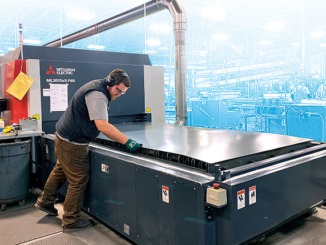
By / Peter Boileau, Chairperson, SMACNA-Western Washington Code & Technical Committee
Since ancient times, civilized humankind has used air systems to improve lives. As early as 4,000 BCE, civilizations across the Middle East from Egypt to Persia built large buildings with “wind catchers”. These tall, chimney-like structures were built atop roofs with long vertical slots that captured the cooler nighttime winds and directed them down to underground basements to both cool the building’s occupants and help preserve perishable food. Our ancient ancestors understood the benefits of harnessing, directing, and controlling air systems, and if we fast-forward 6,000 years, we can see how our SMACNA national and local organizations have and will continue to promote the use of air systems to benefit our world today and into the future.
The Code and Technical Committee had a busy year in 2021. We finished our review of the 2018 Washington State Energy Code, which was finally adopted last February. Please see previous issues of this column in previous issues of Sheet Metal Journal-Western Washington for details on significant changes that might affect you. 2022 is looking even busier than 2021, with all kinds of changes to our industry. Some of the issues we will be addressing are outlined below.
SMACNA has revised the Duct Construction Standards Manual and has released the latest edition to include new fabrication tables for flat oval ductwork, updated hanger requirements, and standards for the use of spray and aerosolized duct sealants for duct installation. In addition, there is a new standard for lining round and spiral duct fittings. Coming out in 2022 will be a rectangular duct construction app to assist in selecting material gauges and reinforcing for a variety of pressure classes and duct sizes for both positive and negative pressure systems. Our committee will scrub this new edition and provide feedback in the coming months.
Next year, SMACNA will also be releasing updates to the Seismic Restraints Manual, the Round Industrial Duct Construction Manual, Fire and Smoke Damper updates, and a new Kitchen Equipment and Ventilation Manual, which includes new standards for kitchen exhaust duct fabrication and installation. A lot of new information coming our way that our committee will dig into to help you stay up to date.
SMACNA has also been busy recently publishing a series of new Technical Resource Bulletins (TRBs) on a variety of subjects. Some of these include detailed guidance on fabrication and installation of outdoor/rooftop ductwork systems, duct liner application updates, and updated guidance on the use of internal reinforcing tie-rods. These bulletins provide excellent, detailed guidance on very specific topics critical in our industry, and our committee will be reviewing the latest TRBs next year to help educate and spread awareness to our members of these important details.
Despite the delay in adoption of the 2018 Washington State Energy Code due to COVID-19 impacts, the 2021 code updates are expected to stay on schedule, with adoption of the 2021 code anticipated in July 2023. The suggested amendments and changes from the state’s Technical Advisory Group (TAG) have just been released, and our committee will once again highlight and share these updates. As we have done in the past, we will clarify how they may impact your business.
And finally, we are rapidly moving closer to the implementation of the Washington State Clean Buildings Act. This standard focuses on reducing energy consumption in all new and existing commercial building over 50,000 square feet, and also in the “de-carbonization” of new and existing buildings now and in the future. The Clean Building Standard first appeared in 2016 in the form of the City of Seattle’s “Building Tune-ups” program, followed by passage of House Bill 1257 in 2019. This new law will be phased in over the next several years. It will require buildings to meet target “energy use index” (EUI) values for maximum allowed energy consumption and eliminate the use of carbon-based fuels (primarily natural gas) in favor of refrigeration cycle electric heat pump technology for heating, cooling, and domestic water generation.
This is a major change to the existing commercial building in our state because by the dates targeted, these buildings/owners need to both reduce their energy consumption and switch from fossil fuels to electric/heat pump systems. The target dates in this law are 2026 for all buildings over 220,000 square feet, 2027 for buildings over 90,000 square feet, and 2028 for all buildings over 50,000 square feet. Buildings that meet these goals prior to the dates above will be eligible for incentives, and those that do not comply by these dates will be subject to fines. In order to obtain at least some financial relief from these requirements via the incentives offered, we need to inform our customers and help them strategize the least-cost approach to this legislation. The code and technical committee is a resource for you to use to develop these strategies, so please reach out as needed and we will assist with this complex issue.
And as always, our committee will continue to promote air-side solutions as the best method to achieve safe, cost effective, and energy efficient solutions for our customers. Our industry is already based on the use of almost 90% recycled content in the sheet metal systems we install, providing enhanced environmental benefits and reducing the carbon footprint of every building we touch. ■



